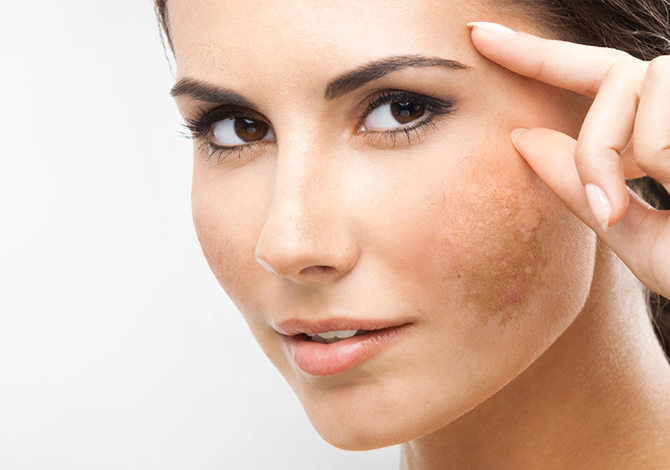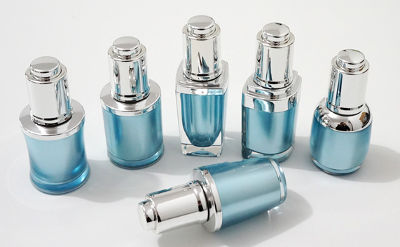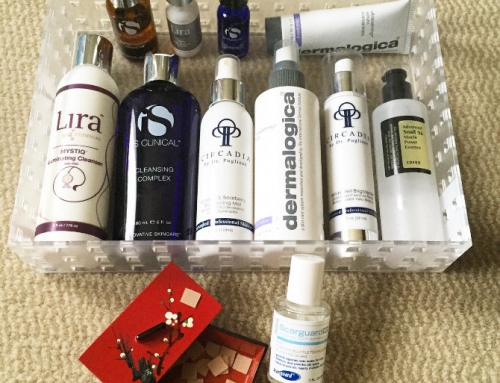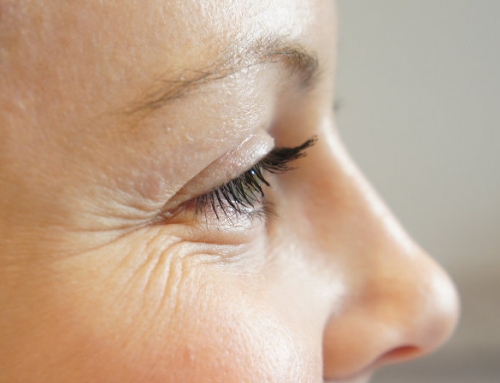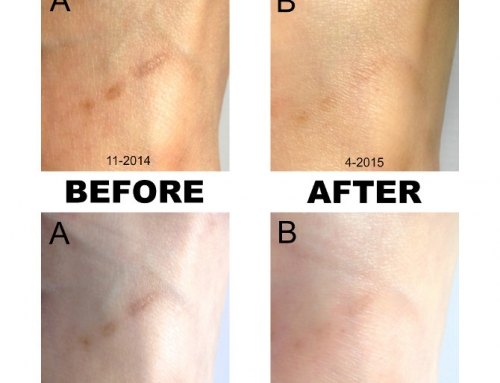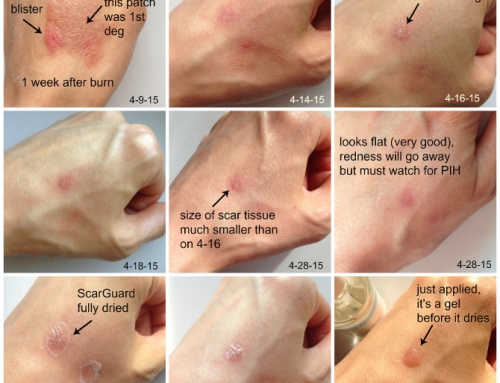One of the most stubborn and frustrating skin problems for many people is hyperpigmentation – skin that is darker in certain areas. It is, in my opinion, the hardest problem to treat.
From my own personal experience with freckle-like dark spots, I understand the struggle. Mine positively refuse to go away (with topical products). It is a constant battle to keep them in check.
In my last blog post, I wrote about the effects of hormones on skin. One effect is an increase in pigmentation on the face and body during times when hormone levels change. It’s called melasma or pregnancy pigmentation – the topic of this post.
Pregnancy Pigmentation
If you are pregnant, or have been pregnant before, then you may have observed the appearance of dark patchy areas on your face and/or neck. Patches are areas, not small round spots like freckles.
Melasma patches are usually a uniform, tan or brown color. They have well-defined borders and are clearly visible from the surrounding skin (your normal skin color). They are also flat, not raised like a mole might be.
The pigmentation may form while you are pregnant (typically second or third trimester) or after you have given birth. The pigmentation forms slowly during pregnancy, and it fades slowly after pregnancy. It can take many months or even years for it to fade. Sometimes, the pigmentation is permanent. And it can re-appear with subsequent pregnancies.
Melasma
Melasma is the medical name for this condition. The dark patches typically appear on the central third of the face (cheeks), forehead, upper lip, and chin.
The pattern tends to be symmetrical – appearing in the same general area on both sides of the face, but not necessarily mirror images of each other.
The patches may also be irregular – positioned asymmetrically throughout the face. You may have only one single patch or you may have multiple areas of discoloration. Multiple patches can congregate in an area, looking like one large dark area (but it’s actually made up of several dark patches).
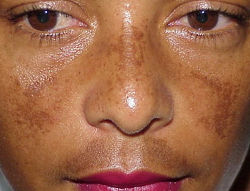 Melasma goes by other names – chloasma, mask of pregnancy, butterfly mask. “Butterfly” refers to the pattern of discoloration formed – where both cheeks and the bridge of the nose are pigmented (see photo to the right for an example). Butterly is a classic pattern for melasma, but you can still have melasma without this pattern.
Melasma goes by other names – chloasma, mask of pregnancy, butterfly mask. “Butterfly” refers to the pattern of discoloration formed – where both cheeks and the bridge of the nose are pigmented (see photo to the right for an example). Butterly is a classic pattern for melasma, but you can still have melasma without this pattern.
Melasma occurs more often in darker skin tones, skin of color, and certain ethnicities, such as black, Hispanic, Asian, Mediterranean, Middle Eastern, and Indian skin. It is thought to have a genetic component. Unfortunately, the mechanisms of melasma are not well understood, and consequently, the treatment options are very limited (more on this below).
 Melasma isn’t limited to women. Men can get it too (though much less frequently, about 10% of men).
Melasma isn’t limited to women. Men can get it too (though much less frequently, about 10% of men).
Melasma may also occur after oral contraceptive use or when there are significant hormonal changes. Even hormonal fluctuations caused by stress can cause melasma.
What Makes Skin Pigment More
So what makes skin pigment more during certain times? While you may only care about what to do and not why, it’s important to understand this section. Much of your treatment success will depend on your understanding of what NOT to do.
#1 – SUN
The sun is a powerful activator of melanocytes, which are the cells in skin that are responsible for producing pigment.
The sun’s solar energy increases the number of melanocytes and their level of activity. This is why skin tans and burns when it is exposed to sun.
 Melanin (pigment) is your skin’s defense mechanism against harmful UV radiation. It is the body’s way of coping with excess radiation. Melanin absorbs this heat energy to prevent it from damaging DNA and cellular organelles, both vital for normal functioning.
Melanin (pigment) is your skin’s defense mechanism against harmful UV radiation. It is the body’s way of coping with excess radiation. Melanin absorbs this heat energy to prevent it from damaging DNA and cellular organelles, both vital for normal functioning.
Any time you expose your skin to sun, the melanocytes in your skin become more active.
MORE SUN ==> MORE ACTIVE MELANOCYTES ==> MORE PIGMENT
#2 – TRAUMA
Anything that triggers inflammation in your skin is a form of trauma. Trauma may be so minimal as to not be visible (such as everyday exposure to UV rays) or really obvious (when your skin is beet red, swollen, and in pain).
The inflammation process triggers pigment production, just like the sun makes your skin darker.
An acne scar is a good example. When you develop a dark spot after a pimple has healed, that darker color is due to inflammation, which has turned on the pigment-making switch. It’s known as Post-Inflammatory Hyperpigmentation (PIH). If your skin darkens after it has been cut or scraped, that’s also PIH at work.
#3 – HORMONES
During pregnancy, estrogen and progesterone levels surge. Both of these hormones are involved in stimulating the production of pigment too. I say “involved” because the mechanism isn’t well understood. Menopausal women undergoing hormone replacement therapy have elevated estrogen levels without exhibiting melasma or an increase in pigmentation.
 The same thing may happen during oral contraceptive use (birth control pills). OCP’s are composed of differing amounts of estrogen, estradiol, and progesterone (depending on the drug brand). Those with higher levels of these hormones may stimulate pigment production.
The same thing may happen during oral contraceptive use (birth control pills). OCP’s are composed of differing amounts of estrogen, estradiol, and progesterone (depending on the drug brand). Those with higher levels of these hormones may stimulate pigment production.
In the case of melasma or pregnancy pigmentation, two things happen simultaneously that lead to dark patches:
1). Changing hormone levels (estrogen & progesterone) stimulate pigment production.
2). The sun exacerbates the situation by making already active melanocytes even more active.
It’s a double whammy.
Skin of Color
As I mentioned above, melasma tends to be more common in darker skin tones and skin of color. Why is that?
First, let’s define “skin of color” loosely. This term typically refers to olive, yellow, brown, and black skin tones.
 You can also look at it another way – in terms of ethnicity/race, not the actual color you see. You may have fair or “white” colored skin, but if you are of Hispanic or multi-racial origin, your skin will exhibit risks for skin of color (more on this below). Color is deceiving.
You can also look at it another way – in terms of ethnicity/race, not the actual color you see. You may have fair or “white” colored skin, but if you are of Hispanic or multi-racial origin, your skin will exhibit risks for skin of color (more on this below). Color is deceiving.
For example, I am ethnically East Asian, and though somewhat fair (Fitzpatrick Skin Type 3) and the same complexion of some Caucasians, I most definitely consider myself to be in the skin of color group. My skin pigments and scars easily.
Certain skin problems are more prevalent in skin of color:
- pigmenting more (or losing pigment)
- scarring (e.g. acne scars, excess scar tissue)
- having more sensitivity or reactions to certain ingredients or cosmetic procedures.
Unfortunately, these risks are not addressed often enough. If you have skin of color, you may feel that much of the marketing, product development, and skin talk in this country (U.S.) caters to the majority Caucasian skin demographic.
So here, I just want to point out that if you have skin of color, you need to be aware of the following:
1). Your melanocytes (pigment-producing cells) are innately more active.
2). They are more sensitive to triggers, such as sun and trauma.
3). Your skin is more likely to scar after a trauma to skin, such as acne (the inflammatory process that causes acne is a form of “trauma”), a chemical peel that is too strong for you, a wound, a surgical procedure that involves cutting & suturing, dermabrasion or laser resurfacing.
There is nothing you can do about the innate biology of your skin. So you must be extra vigilant and proactive about protecting it from triggers and injury.
Treatments For Melasma
Treatments for melasma today are quite limited and hit or miss in their effectiveness.
Melasma pigmentation is extremely difficult to remove quickly.
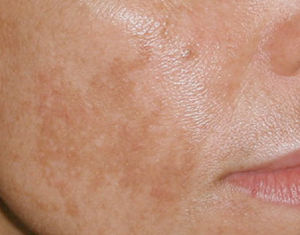 In general, dark spots are hard to fade, much less eliminate altogether. Pigmentation has a tendency to keep coming back because skin has a ‘memory.’ Spots and lines/wrinkles will re-appear in the same places no matter how many times you exfoliate (except when you totally obliterate epidermal skin by a super strong medical peel or ablative laser).
In general, dark spots are hard to fade, much less eliminate altogether. Pigmentation has a tendency to keep coming back because skin has a ‘memory.’ Spots and lines/wrinkles will re-appear in the same places no matter how many times you exfoliate (except when you totally obliterate epidermal skin by a super strong medical peel or ablative laser).
Compared to dark spots that you might get from regular sun exposure, melasma is even more stubborn and resistant to treatment. So if you have it, you have to be patient as improvement will be slow and gradual.
Some people are lucky – discolorations fade fairly easily with good brightening treatments. Some people never see an improvement no matter what they apply. I fall into the latter category, and this has to do with where the pigment is located and what kind of pigment it is (a topic for another day).
There is no miracle treatment product. But let’s run through the options.
TOPICAL PRODUCTS THAT CORRECT
Prescription Drugs
A dermatologist might prescribe you a prescription-strength bleaching cream – typically a hydroquinone treatment or hydroquinone combined with a retinoid (e.g. tretinoin) and fluocinolone. (There are other prescription treatments too).
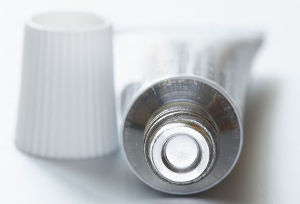 These treatments work for some people. But hydroquinone is a controversial ingredient in terms of its long-term safety (there are studies that show it is potentially mutagenic) and side effects (it can be an irritant and sensitizer). Some skin professionals and skincare companies are adamantly against it, while some dermatologists stand by it and consider it to be the best option for skin lightening.
These treatments work for some people. But hydroquinone is a controversial ingredient in terms of its long-term safety (there are studies that show it is potentially mutagenic) and side effects (it can be an irritant and sensitizer). Some skin professionals and skincare companies are adamantly against it, while some dermatologists stand by it and consider it to be the best option for skin lightening.
Sadly, it is the only drug ingredient approved for skin lightening in the U.S. as of now. In other words, there aren’t really any other options in the medical channel.
Hydroquinone is also risky for skin of color, particularly at prescription concentrations (more than 2%) or higher. When it is compounded at scary high concentrations in dubious pharmacies, it is extremely risky. PLEASE – don’t be tempted to try this if you are desperate! You will likely regret it deeply.
 One risk is pigment returning with a vengeance. You may develop even more pigmentation when treatment is discontinued.
One risk is pigment returning with a vengeance. You may develop even more pigmentation when treatment is discontinued.
You can’t use hydroquinone indefinitely. It isn’t designed to be used for a long period (the recommended period is typically 2-3 months). Hydroquinone works by suppressing melanocytes (the cells themselves). You don’t want to shut them off permanently. Once melanocytes are irreversibly damaged, you can’t produce pigment anymore. You can actually de-pigment the skin, leaving a void (no color). Areas of lightness is just as, if not more, frustrating than having darker areas.
I am personally not 100% convinced that hydroquinone should be avoided altogether, because it does work in the short term and effectively for some people. It’s helpful as a pre-treatment prior to a peel or resurfacing procedure. But I also do not reject the safety concerns either. My approach would be to proceed with caution and not use it for too long.
If you are considering hydroquinone (in a retail skincare product) and you have skin of color, you should consult with a physician first, who can advise you of your risk profile.
Also, if you are using hydroquinone for the first time, I would not try it on your face. It’s too risky. Test it on your body first – someplace you don’t care about. I always test hydroquinone products on my feet or legs where I have plenty of spots leftover from scrapes or mosquito bites.
Retail Brightening Products
If you’d like to try fading your spots before visiting a dermatologist, you can experiment with brightening treatments available in a retail store. Virtually everything in skin care may be marketed as brightening – cleansers, toners, exfoliants, masks, serums, moisturizers.
Where you should focus your money is on brightening serums or spot treatments intended for daily use – something that you apply twice a day or more. A serum is more potent than any other category of skincare. So if you have a limited budget, this should be your top priority.
You may recall from an earlier post my advice to incorporate brightening into different steps of your routine. This is an ideal approach if your budget allows you to buy a whole brightening routine.
The pigment production pathway is long and complex. Most topical brightening treatments work in one of two ways:
- They interrupt some step(s) in the long (multi-stepped) pigment process – the end goal is to prevent the formation of pigment in the first place.
- They exfoliate to speed up the removal of already pigmented skin cells – the end goal is to fade existing pigment.
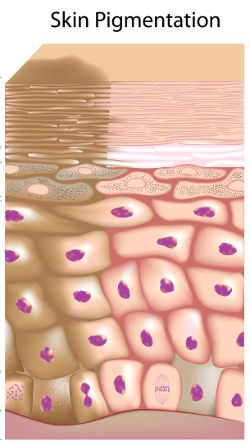 The more you interrupt the pigment process, the better. Brightening ingredients (and there are so many marketed today!) work at different points along this pathway. A variety of brightening ingredients working at different points will do more blocking, reducing the overall amount of pigment produced.
The more you interrupt the pigment process, the better. Brightening ingredients (and there are so many marketed today!) work at different points along this pathway. A variety of brightening ingredients working at different points will do more blocking, reducing the overall amount of pigment produced.
Daily usage of a brightening serum or spot treatment is critical. Melanin production is an ongoing process. You need to keep inhibiting its production. Once you stop applying those brightening ingredients, pigment is likely to return if your melanocyte activity is naturally elevated.
Naturally, the question is: Which brightening ingredients should I use? What products should I use?
These are questions for which there is no single, right answer. It depends on many factors – your skin type, what’s going on with your skin, and what else you’re using in your routine.
What works for me may not work for you. No two people are alike and will respond the same to products. Brightening treatments, unlike moisturizers or cleansers, are inconsistent – all over the map in their outcomes. It’s difficult to predict if a product will work. The only thing to do is to try it.
Not what you want to hear, I’m sure. Just being candid to keep expectations realistic.
SUNSCREEN
Now that you know how big a role the sun plays in triggering pigmentation, sunscreen is a no brainer, right?
You’ll hear it from every professional you ask: USE SUNSCREEN!
It’s so critical, let me beat the message into the ground:
SUNSCREEN IS VERY, VERY, VERY, VERY, VERY, VERY IMPORTANT
You cannot and will not see any reduction in your pigmentation if you fail to use sunscreen.
Wearing sunscreen is not just about preventing signs of aging or sunburns. In the case of melasma, it’s all about blocking a powerful signal (the sun telling your skin to make pigment).
Any short term progress you make with treatments (topical products or procedures) will reverse itself as soon as you expose yourself to the sun. So it is essential you adopt a preventive approach to the maximum extent you can. You have no control over your hormones, but you do have control over sun protection.
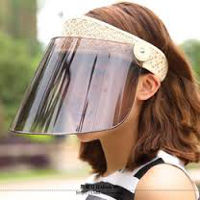 Keep your sun exposure to a minimum. Of course, you cannot avoid the sun completely. It’s neither practical nor healthy (you need sun for Vitamin D production).
Keep your sun exposure to a minimum. Of course, you cannot avoid the sun completely. It’s neither practical nor healthy (you need sun for Vitamin D production).
If you start to see any appearance of discoloration while you are experiencing hormonal changes, it’s time to cut back on outdoor activities. Given how few good treatments options there are, the pain of dealing with stubborn melasma outweighs any short term joy you gain from being in the sun.
Be smart – PREVENT as much as you can. Prevention is the best strategy and plays a supersize role with melasma.
Reminders
- Be consistent in your sunscreen usage. Not just whenever you remember to apply it. It must become a daily habit if it isn’t already. At least once a day first thing in the morning, and repeated applications throughout the day. Sunscreen wears off and rubs off easily.
- Keep sunscreen handy so you don’t forget to put it on. Fortunately, good sunscreen is affordable and widely available. Buy multiples of your favorite and place them in your home, bag, workplace, car, etc.
- Wear hats and sunglasses.
P.S. Yes, the king-size visor pictured above may be overkill 🙂 But if it helps a lot, why not?
PROFESSIONAL TREATMENTS & PROCEDURES
After a pregnancy (but not during), another option to consider is a series of chemical peels performed by an esthetician or medical spa.
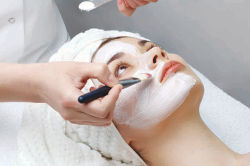 Professional chemical peels are stronger than the exfoliants you can buy yourself from a retail store. Even the exfoliants you buy from a spa or doctor’s office are not professional-strength.
Professional chemical peels are stronger than the exfoliants you can buy yourself from a retail store. Even the exfoliants you buy from a spa or doctor’s office are not professional-strength.
Professional-strength exfoliating products are never sold to consumers, only to skin pros and physicians. This is one good reason to get a facial from time to time (you get a much deeper clean and exfoliation). Medical-grade peels are the strongest as they remove the most skin.
You’ll need a series of peels. Not just one or two. A series of peels typically involves a peel every 2-4 weeks and can take several months to a year to complete, depending of your skin and the treatment goal.
Be careful though – some skin types are not suitable for chemical peels. And skin of color needs extra caution. Certain chemical peels are counter-productive for skin of color (and will actually make things worse).
The choice of a peel and whether to provide a peel at all, is also determined by the source of the pigmentation. For instance, melasma and post-inflammatory hyperpigmentation may look the same on the surface, but they are treated differently. When you have PIH, the last thing you want to do is inflame it more with a strong peel. If your dark areas are incorrectly diagnosed, you could end up with the wrong protocol.
This is why you should choose your peel provider very carefully. Find someone with a lot of experience with peels. Peels gone wrong are not uncommon. With an incorrectly chosen or delivered peel, you could end up with more pigmentation than you started with, a total loss of pigmentation, or damaged skin that takes a long time to heal.
When To Consider Professional, In-Office Treatments
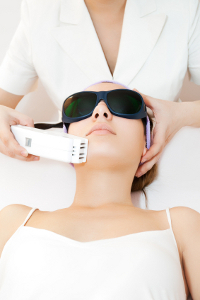 If you find yourself in a situation where you have tried 5-10 brightening home products with absolutely no results (zero to minimal improvement), then I would suggest you stop experimenting with retail products.
If you find yourself in a situation where you have tried 5-10 brightening home products with absolutely no results (zero to minimal improvement), then I would suggest you stop experimenting with retail products.
Save your money and invest it in professional treatments, such as a chemical peel series or laser or IPL light treatments.
Visit an esthetician, preferably a medical esthetician – this is an esthetician who works in a medical spa or medical practice alongside physicians and nurses, not a day spa. Or a dermatologist whose practice focuses on cosmetic/esthetic services.
During and after your chemical peel series, your provider will recommend a brightening home care routine for you. These brightening products will complement the in-office treatments to enhance the overall fading.
Professional treatments are more expensive (in terms of upfront investment) but yield better and faster results. In the long run, you’ll save time and money. But again – you need to put yourself into capable hands. Even professionals can provide bad outcomes.
If you don’t feel confident about your provider, don’t proceed. Wait and keep looking.
What’s On The Horizon?
So there aren’t any easy, surefire ways to get rid of pigmentation today. But the good news is – there’s quite a bit of research & development attention on skin lightening. The demand for it is huge and global (especially in Asia), and it is a problem area sorely lacking in effective treatments.
The pace of scientific progress continues to grow faster and faster. I believe we will see superior solutions for correcting excess pigmentation – as in, getting rid of it once and for all! Not just 20%, not 50%, but 100%. Easy and fast. We’ll probably also find a way to re-pigment skin that has lost its color (e.g. hypopigmentation), which today we can’t do anything about.
I think the miracle lightening solution will surface in our lifetime, and hopefully much sooner (because a lifetime sounds so far away).
In the meantime, what you should do is aggressively prevent pigment from forming. Keep your skin protected from the sun, use brightening treatments in your routine, and exfoliate regularly. Most of all, be patient and play it safe when you are deciding on more invasive treatment options.
Want new articles delivered straight to your inbox? Sign up here.
Related Reading:

